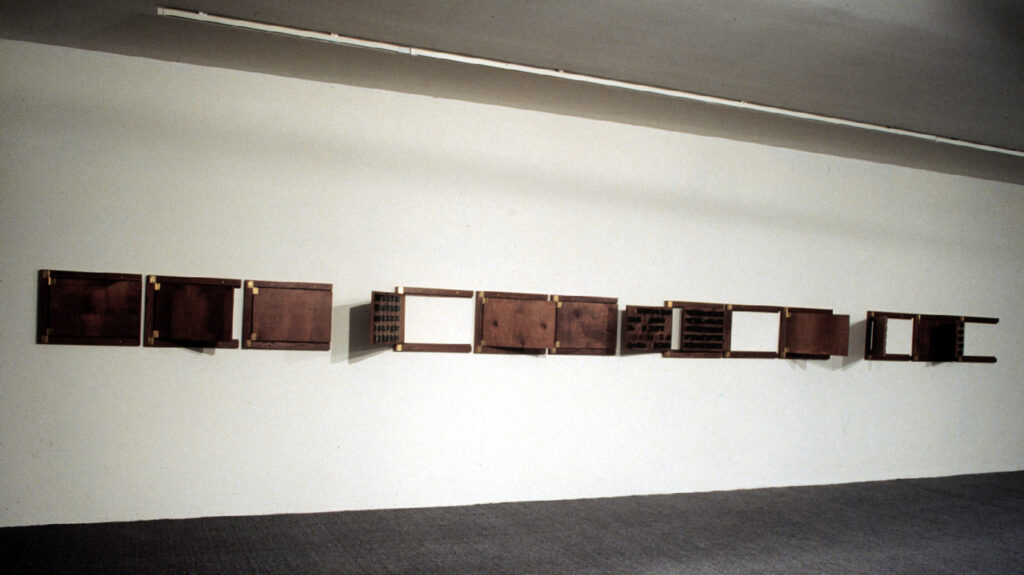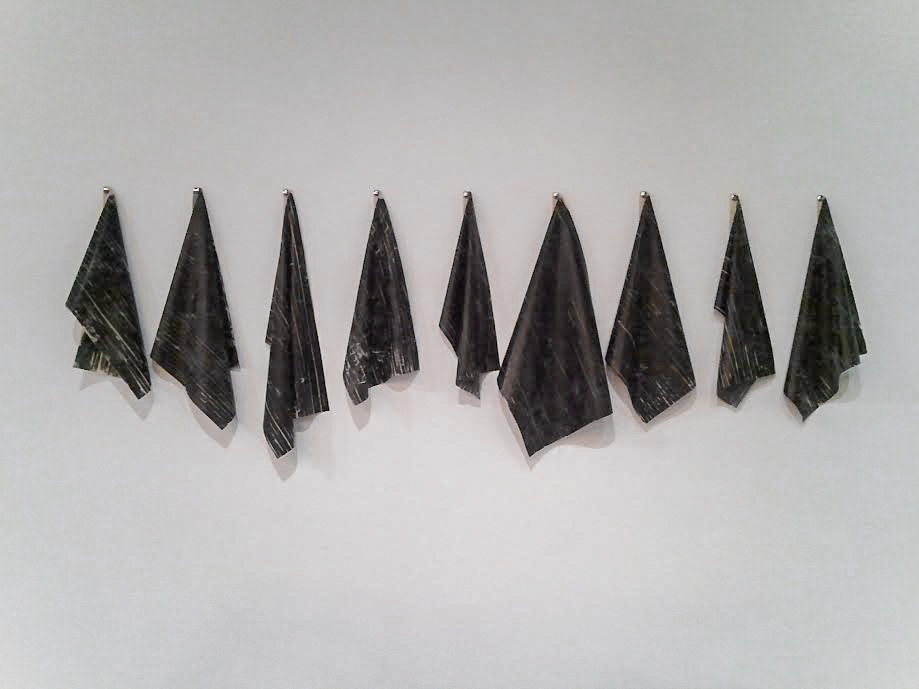
january 20, 1942

- Typewriter film carbon and pencil on vidalon, cloth, nails
- 90 x 137″
- Installation view Momenta Art, Brooklyn
Description:
Sheets of vidalon are nailed to the wall in three sections, each section consisting of 24 single sheets. They are attached so that each sheet overlaps the one above, leaving only the top 5 centimeters of it visible. So most of the writing is covered up. The vidalon sheets bear different amounts of text, depending on the length of the text source. The writing was produced by writing with a dental instrument over typewriter film ribbon and then pressing that ribbon onto the sheets, line by line. After removing the film ribbon only the carbon from the typewriter film ribbon remains as dense, irregular, negative traces of writing. Each sheet has a date penciled in on its top left corner.
Text and sources:
The title, January 20, 1942, refers to the so-called Wannsee Conference, where Nazi leaders decided on the extermination policy, what they termed the “Endlösung” or Final Solution. Each of the three sections in this piece bears one person’s diary entries. The diaries were written by Jews who survived in Bucharest, Krakow, and Dresden. The dates of the first entry in the diaries are, respectively, January 19, 20, and 21, of 1942, and continue. Each vidalon sheet contains one diary entry.
The sources are: Emil Dorian, The Quality of Witness: A Romanian Diary, 1937–1944 (original in Romanian: Jurnal din vremuri de prigoana), ed. Marguerite Dorian, trans. Mara Soceanu Vamos (Philadelphia: Jewish Publication Society, 1982). Excerpts used are: 19 January 1942 – 5 September 1942.
Halina Nelken, And Yet, Here I Am! (Amherst: University of Massachusetts Press, 1986). Excerpts used are: Krakow, 20 January 1942 – Winter 1943.
Victor Klemperer, To the Bitter End: The Diaries of Victor Klemperer, 1942-1945, Selections (original in German: Ich will Zeugnis ablegen bis zum letzten), ed. and trans. Martin Chalmers (London: Weidenfeld & Nicolson, 1999). Excerpts used are: Dresden, 21 January 1942 – 14 May 1942.
Thoughts about the work:
The work does not provide the text sources, nor is the writing easily legible. Only a few words here and there can be deciphered. The only context given is the title (which is significant to some but not to others) and, on coming closer, the dates and places of the diary entries, which again may trigger associations in some viewers but leave others indifferent. I wasn’t concerned with teaching or passing on the contents of the texts. In any case, the sources are available and accessible in books, easily legible. I was interested in exploring how such texts might not communicate their content, their meaning, or rather, how they might prompt a viewer’s expectations and assumptions to lead to conclusions about what is being seen. By withholding the content and context, the work activates one’s imagination to fill in the gaps. For instance, viewers often assume that the texts here were written in death camps, even though next to each diary entry one can read the city—Krakow, Dresden, Bucharest. It is very much about a viewer’s own awareness, fears, and comprehension.
More Installations


spines (from the series Elective Affinities)
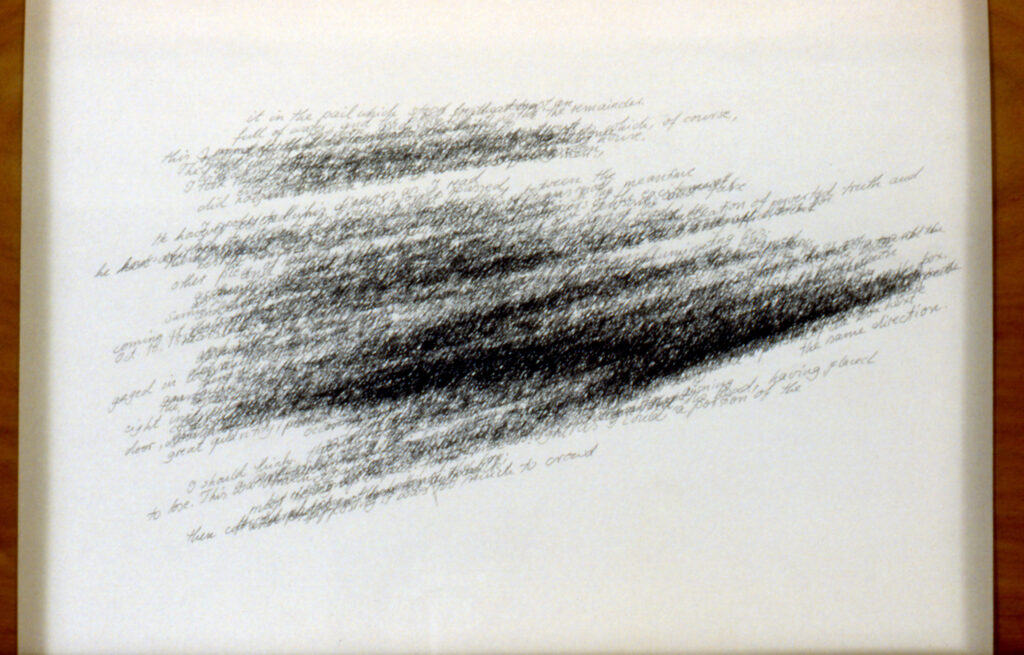
escapes from “the tombs”
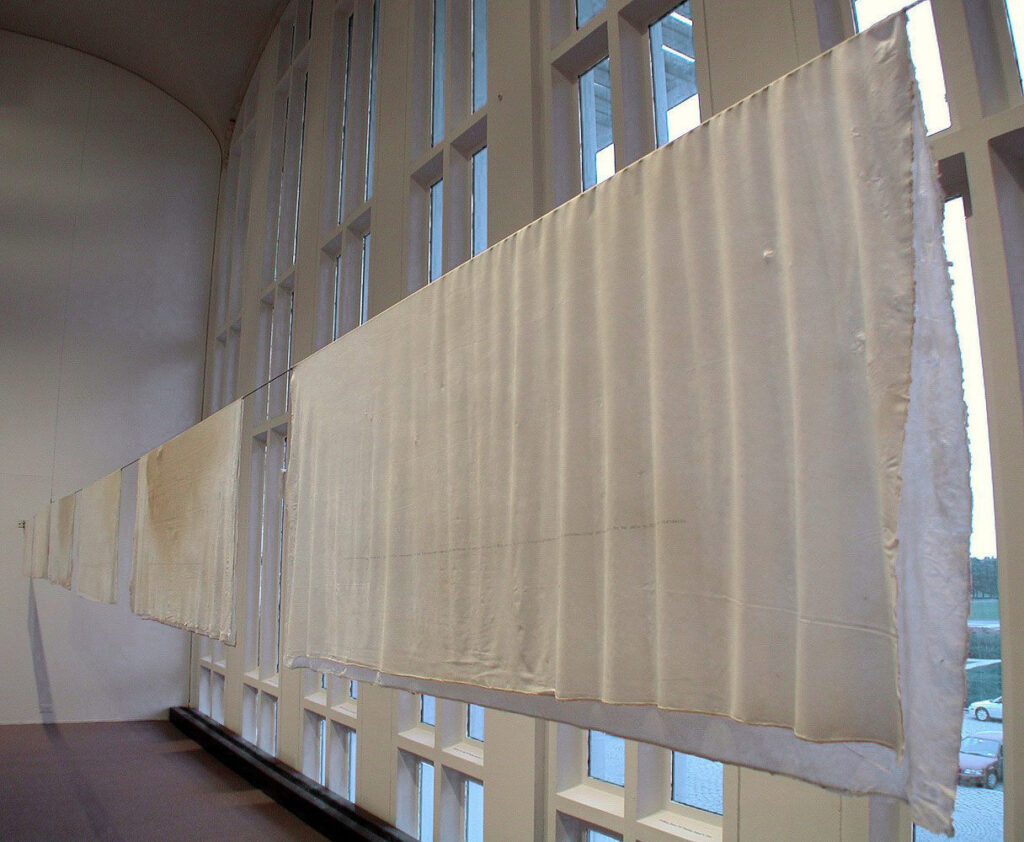
a question of vigilance
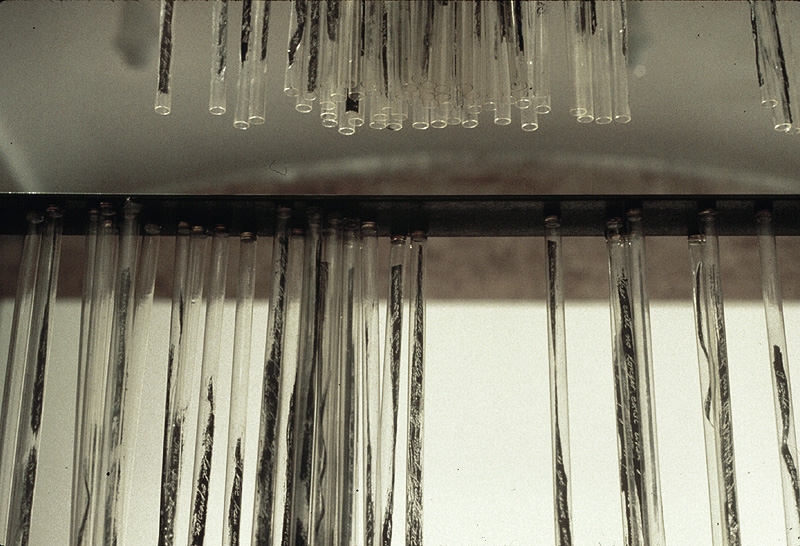
last letters
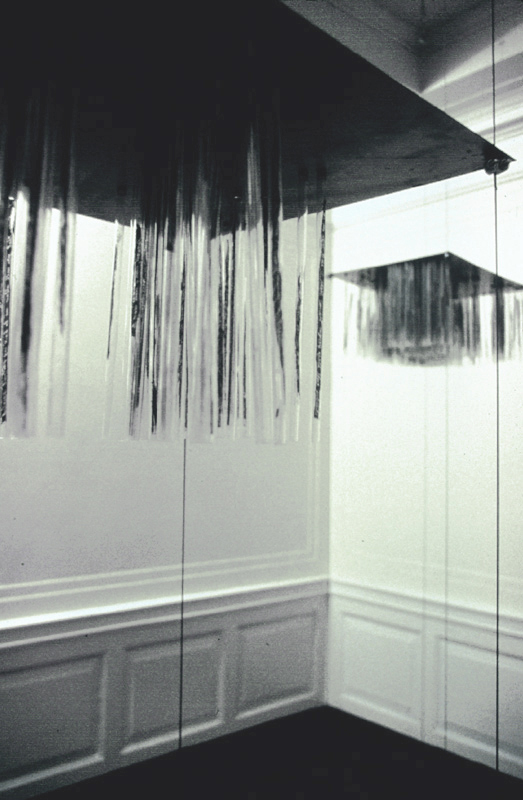
when you receive this
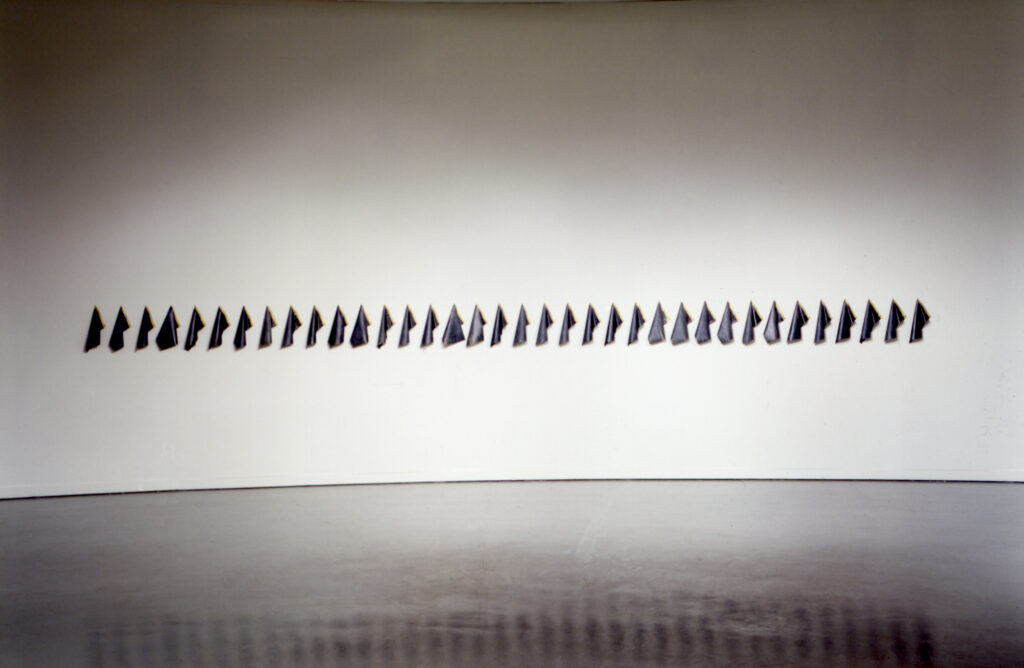
accounts

deliveries
